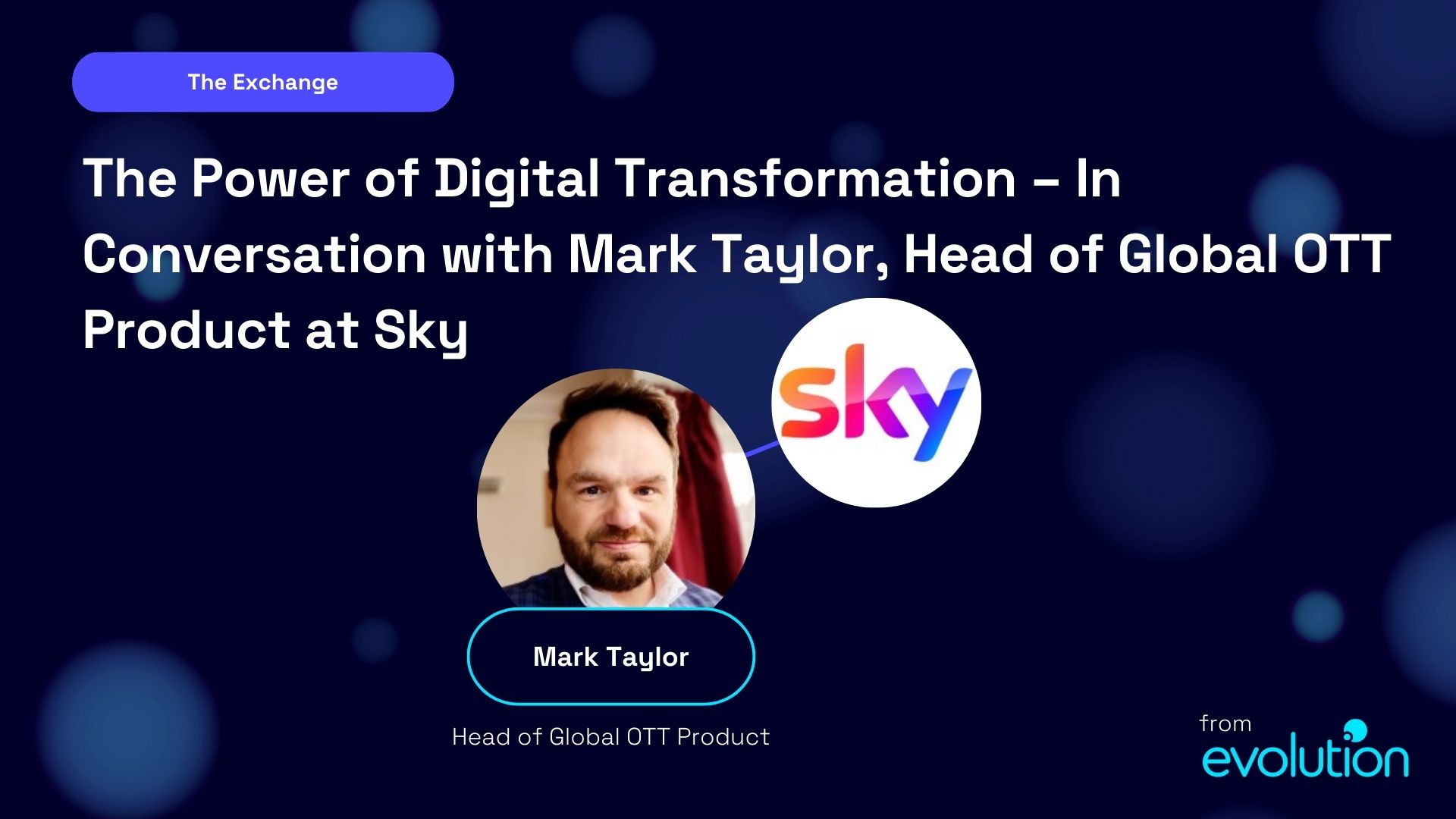
Mark Taylor, Head of Global OTT Product at Sky, is responsible for the Now application and WOW application across UK, Ireland, Italy and Germany. This includes updating the apps on a regular basis across multiple devices including mobile connected TVs, the web, Apple TV and Roku devices, as well as working with people across the business on new features and strategic initiatives.
Working within Now, which is unique to the Sky group in its non-contract offerings, Mark enjoys the challenges that come from working in a slightly different market within the larger business.
“The opportunities are pretty endless here. As long as you’re willing to put the work in, build out your network, then you can pretty much achieve anything you want.”
In day to day life, it can be easy to overlook just how much digital transformation affects us. However, look back several decades and the differences in the way we live are stark – with the advent of mobile phones, social media and more connectivity than ever before.
“It’s weird to think that there was ever a world where digitisation wasn’t a part of our everyday lives, whether it be at work or whether it be in our personal lives.”
Now, digital transformation occurs on a daily basis, and we all benefit from the leaps forward. These can be in our daily lives – such as the amazing transformation that has led to mobile phones developing from tools for calls and texts to having as much scope as a laptop – or our work lives. The pandemic brought with it a rapid transformation of the way we work, with working from home becoming a norm that businesses were able to embrace.
“It’s interesting how events can drive that transformation. When you get all of the eyes on it and when it becomes the priority, how quickly and effective that digital transformation can be, whereas historically it seems to take years. It just goes to show you if you’ve got the right underlying technologies in place that are flexible and adaptable, you can move them in an agile way to whichever direction you need them to be.”
As more and more processes in our lives are digitised – and as those digital processes are improved – we notice them less and less. From next day to delivery to Apple Pay, the things we do on a daily basis are changing rapidly because of digital transformation, but we don’t necessarily see it.
“If a person wants to watch TV or play a game, they don’t see the technologies that sit behind that, they don’t understand the fact that we drive ourselves to 99.9% service availability. So much of digital transformation, for most people is seamless. It either works or it doesn’t. And if it doesn’t work, I complain.”
The pace of change means that technology is almost unrecognisable over the course of a few decades, with a huge increase in the types of activity we can undertake with our devices.
“There’s not really any part of life where there hasn’t been some massive transformation. However small you might think it is – even a watch. I grew up in an age where a digital watch was a calculator on the bottom, and now, suddenly, I can pay for things, I can text back to someone, I can take a phone call. I never really thought that I’d see that kind of evolution in my lifetime. So it’s everywhere, actually.”
Change can be frightening, and the vast majority of technological advances come with an element of fear or distrust from some of the population. This can be seen in concern around banking on mobile phones, 5G, automated cars. However, change comes from open-mindedness and learning from failures – and in order to do that, risks must be taken.
“You have just got to keep exposing yourself to all experiences and try them out. Experimenting by its very nature will be good and bad experiences will be exposed. I think the challenge for businesses is the fear of failed experiences because then winning those customers back is difficult.”
Throughout his career, Mark has driven change and, through that change, has experienced the push back that can come from those who don’t like change. Dealing effectively with that push back is key to being a digital leader.
“Change is tough for people, it’s hard for them. Being able to articulate that bigger picture to them, and also articulate their contribution to that, is really important.”
Alongside this, to be successful within digital transformation it is absolutely vital that you embrace failure. Transformation only comes from trying new things, and many of those new things will fail.
“Embrace failure to a point where it’s not going to damage you, but you’re going to learn from it. It may succeed and great, brilliant, then you’ve done a good job. But if it fails, it’s okay. The whole point is to deploy, learn and iterate. The learning phase – success or failure – is really, really critical.”